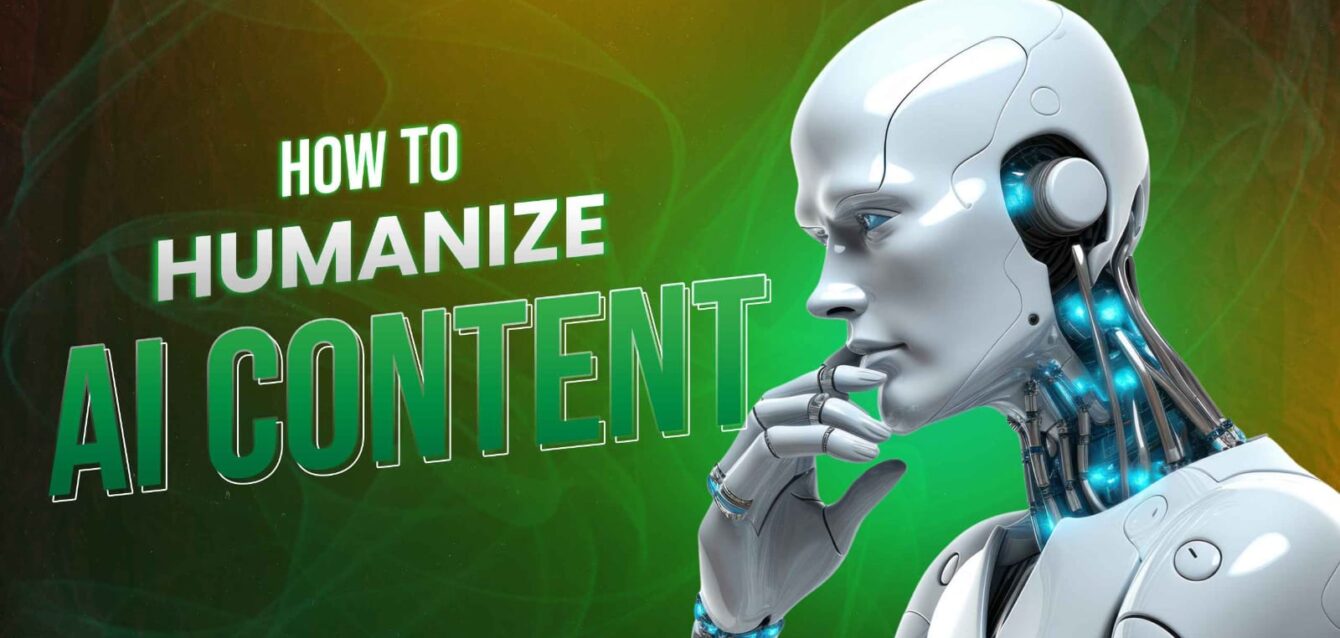Learning how to humanize AI content has become essential as technology reshapes content creation, but raw machine-generated text often lacks the soul that keeps readers hooked. Brands, businesses, and creators are now exploring ways to make AI content feel natural, conversational, and persuasive. With the rise of AI writing tools and AI copywriting platforms, knowing how to refine, personalize, and optimize this content is essential for building trust, boosting rankings, and improving conversions.
This comprehensive guide will uncover proven methods to humanize AI-generated content, improve audience engagement, and make text indistinguishable from content written by humans.
Why Humanizing AI Content Matters
Before learning how to humanize AI content, it’s important to understand why it is necessary. AI-generated text can produce massive amounts of content quickly, but without refinement, it risks being flagged as robotic, repetitive, or shallow.
- User trust – Readers are more likely to connect with human-like AI content that feels authentic.
- SEO performance – Search engines reward high-quality content that aligns with search intent and demonstrates expertise.
- Brand identity – Personalized and unique messaging strengthens recognition and credibility.
- Conversion rates – Emotional, relatable writing motivates readers to take action.
In short, content personalization and AI content humanization are critical for any digital marketing strategy.
Understanding the Challenges of AI Content
Even advanced natural language processing tools sometimes produce content that:
- Lacks emotional depth or storytelling.
- Uses repetitive phrasing or generic expressions.
- Misses cultural nuances or humor.
- Fails to match brand voice or audience needs.
This is why simply relying on AI content generators isn’t enough. The real skill lies in learning how to humanize ai content so that it passes AI content detection tools and resonates with real readers.
Key Strategies: How to Humanize AI Content
1. Start with Audience Research
The foundation of SEO content writing is knowing who you are writing for. AI writing tools can generate text, but they don’t fully understand your audience’s emotions, struggles, or cultural background.
- Use audience engagement metrics to guide your content.
- Study your readers’ tone of communication on social media.
- Focus on search intent keywords to align content with user expectations.
By blending AI copywriting with audience insights, your content will feel more human-centered.
2. Inject Storytelling and Real-Life Examples
Readers love stories. They add warmth and personality that raw AI text cannot replicate. When learning how to humanize AI content, consider:
- Adding short customer success stories.
- Using analogies to explain complex concepts.
- Sharing real-life experiences that mirror audience struggles.
This strategy transforms robotic text into human-like AI content that captivates attention.
3. Refine Tone and Voice for Authenticity
Most AI-generated content has a neutral, mechanical tone. To improve:
- Define your brand voice (friendly, professional, witty, motivational).
- Use conversational AI techniques like rhetorical questions, humor, or casual phrasing.
- Break up long sentences into natural, flowing dialogue.
This aligns your content with how people actually speak and think.
4. Use Emotional Triggers
Understanding how to humanize AI content also involves tapping into psychology. Content should evoke emotions such as curiosity, excitement, or empathy.
- Power words like discover, proven, effortless, hidden boost relatability.
- Emotional appeals help your content stand out from generic AI copywriting.
- Personal anecdotes make writing more engaging.
5. Edit, Proofread, and Polish
Editing is the secret weapon in content creation strategies. AI text often requires reworking for flow and clarity.
- Remove redundant phrases.
- Ensure natural sentence variation.
- Add transition words to guide readers smoothly.
When combined with automated editing tools and human insight, your final draft feels natural, original, and polished.
6. Add Data, Statistics, and Case Studies
While AI content generators can create filler text, they often miss credible data. To humanize effectively:
- Insert research-based statistics.
- Reference industry reports and surveys.
- Include original insights and expert opinions.
This improves both content authority and SEO optimization.
7. Mix in Visual and Multimedia Elements
Humanizing isn’t only about words. Integrating visual storytelling increases readability.
- Add infographics, images, and videos.
- Use interactive content like polls or quizzes.
- Break text into scannable chunks with bullet points.
This supports both audience engagement and SEO ranking.
8. Avoid Keyword Stuffing
While keywords like AI content writing, human-like AI content, and AI copywriting tools are crucial, overusing them creates robotic text. The secret to SEO content writing is balance:
- Place keywords naturally in titles, headings, and body text.
- Use long-tail keywords for a conversational tone.
- Optimize for semantic search rather than keyword density.
9. Leverage Human-AI Collaboration
Instead of replacing human creativity, use AI writing tools as assistants. Writers should focus on:
- Structuring content around storytelling.
- Ensuring cultural context and humor.
- Refining tone for relatability.
This collaboration ensures the final piece passes AI content detection tools while retaining the benefits of automation.
10. Test and Improve Through Feedback
The best way to master how to humanize AI content is by testing it.
- Gather reader feedback through surveys or comments.
- Monitor bounce rate, time on page, and CTR to evaluate performance.
- A/B test different tones and formats for engagement.
Constant refinement ensures your digital marketing campaigns remain effective.
SEO Benefits of Humanizing AI Content
Humanizing text not only builds trust but also strengthens SEO performance. Benefits include:
- Higher rankings – Search engines prioritize high-quality, relevant writing.
- Better CTR – Personalized, engaging headlines attract clicks.
- Reduced bounce rate – Readers stay longer when content feels authentic.
- Voice search optimization – Conversational writing aligns with natural speech queries.
When you apply strategies on how to humanize AI content, you directly improve visibility and results in content marketing.
Tools That Help in Humanizing AI Content
While manual editing is key, certain AI content tools can assist in refining text:
- Grammarly – For polishing grammar and tone.
- Quillbot – For paraphrasing robotic phrases.
- SurferSEO – For optimizing keyword placement.
- Hemingway App – For simplifying and humanizing readability.
- Originality.AI – For checking AI content detection.
These enhance productivity while supporting human-like AI content creation.
Mistakes to Avoid When Humanizing AI Content
- Overloading with technical jargon.
- Ignoring emotional resonance.
- Copy-pasting AI-generated text without edits.
- Using repetitive structures.
- Forgetting to align with audience intent.
By avoiding these pitfalls, your SEO content writing becomes natural and impactful.
Future of Humanized AI Content
The evolution of conversational AI means that machines are getting better at imitating humans. Yet, authenticity and creativity remain uniquely human traits. The future will involve AI-human collaboration where tools provide efficiency and humans add heart, humor, and originality.
Brands that master how to humanize AI content will have a competitive edge, delivering content that not only ranks but also resonates deeply.
Final Thoughts
Mastering how to humanize AI content is no longer optional—it is essential for SEO content writing, digital marketing strategies, and audience engagement. By blending AI writing tools with human insight, adding emotional depth, storytelling, and brand personality, creators can ensure their text passes both algorithm checks and human expectations.
Whether you are a marketer, blogger, or business owner, the secret lies in treating AI as an assistant, not a replacement. With the right approach, your humanized AI content can educate, inspire, and convert—proving that technology and humanity can work together for content excellence.






